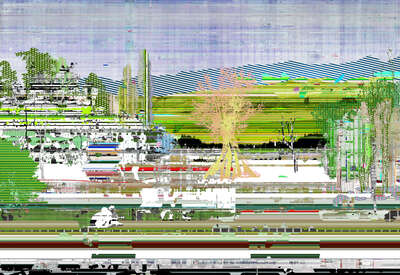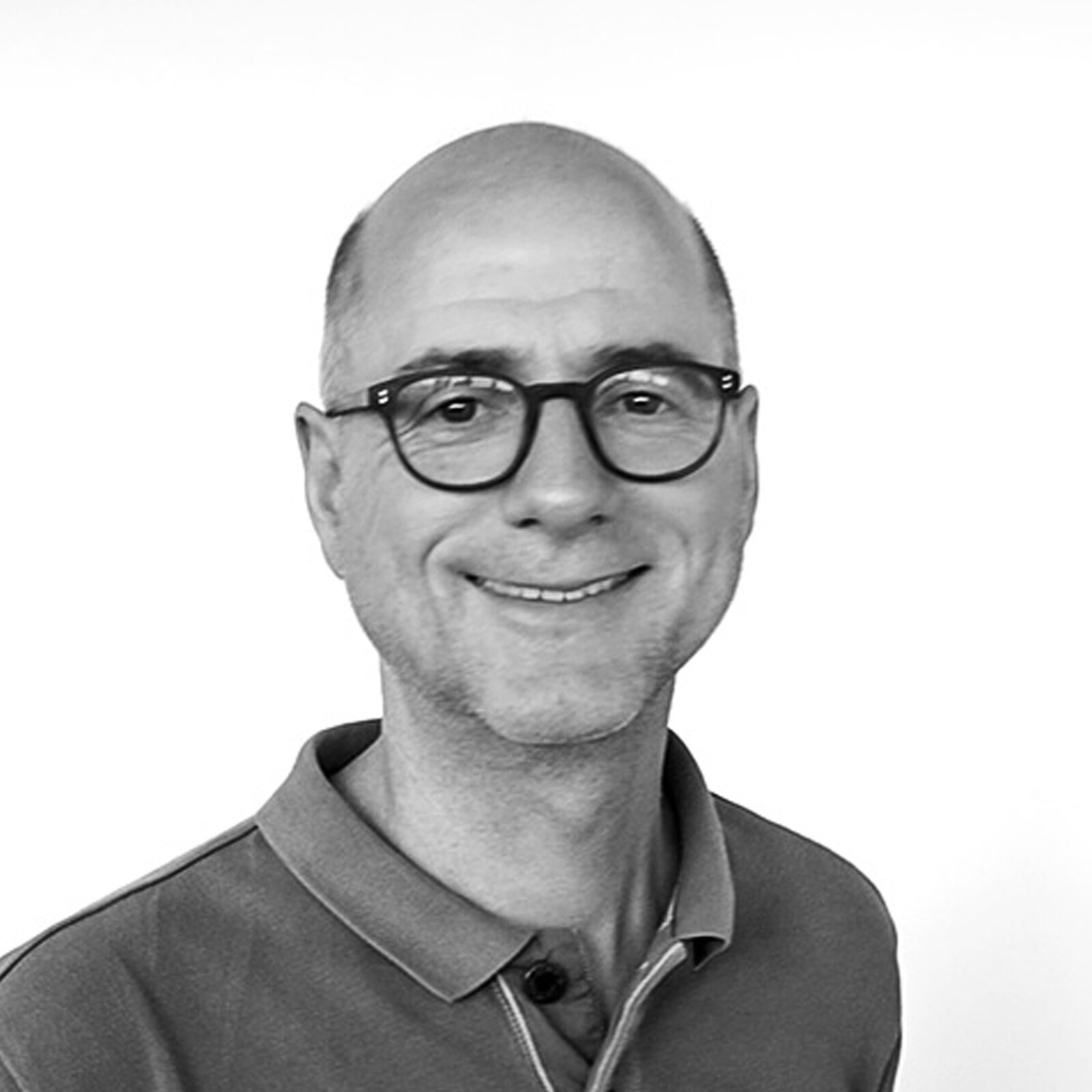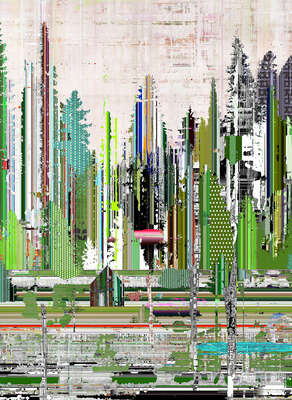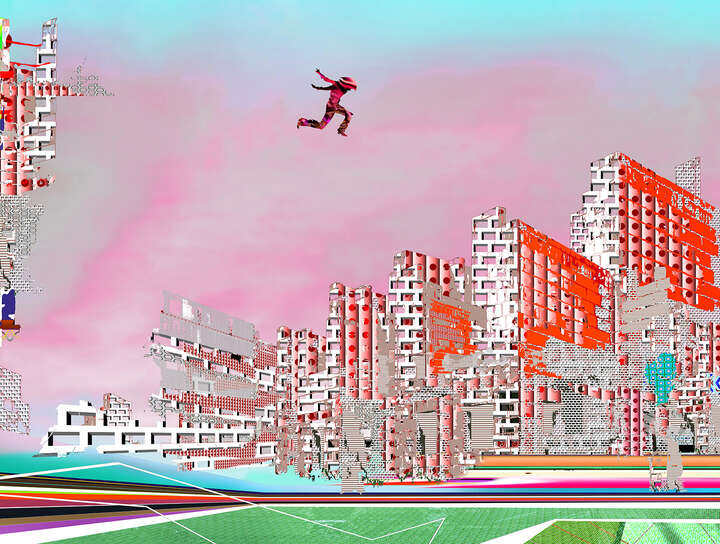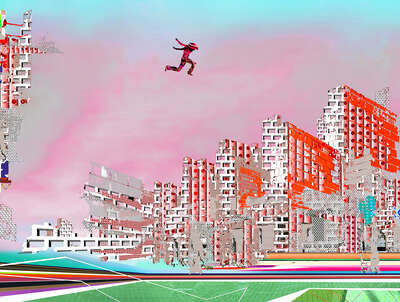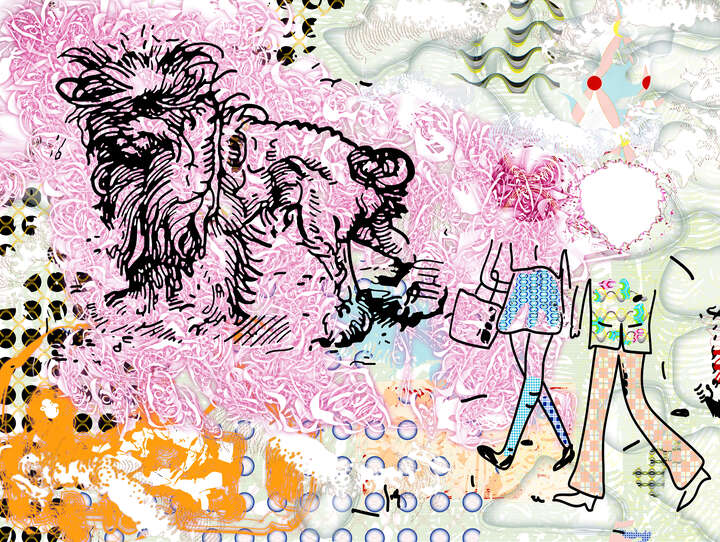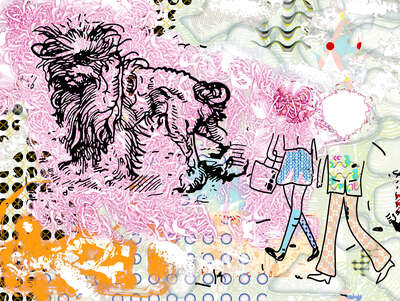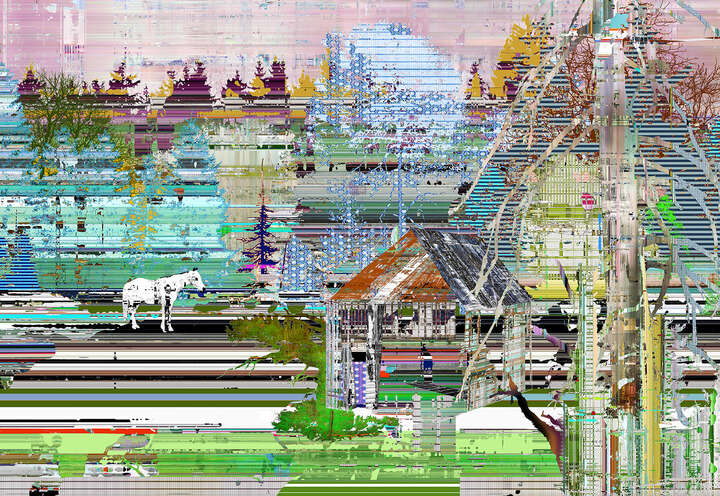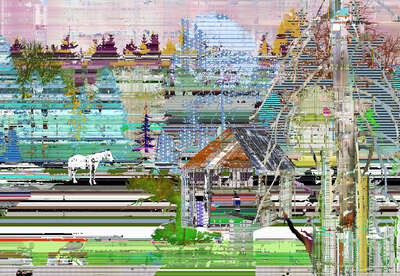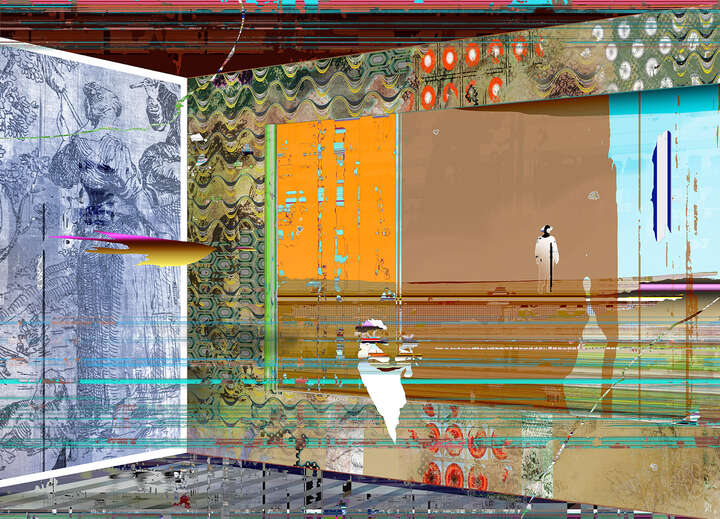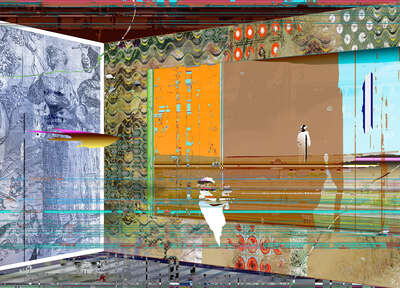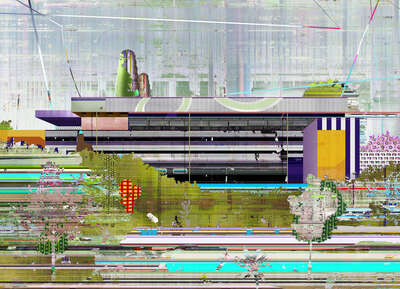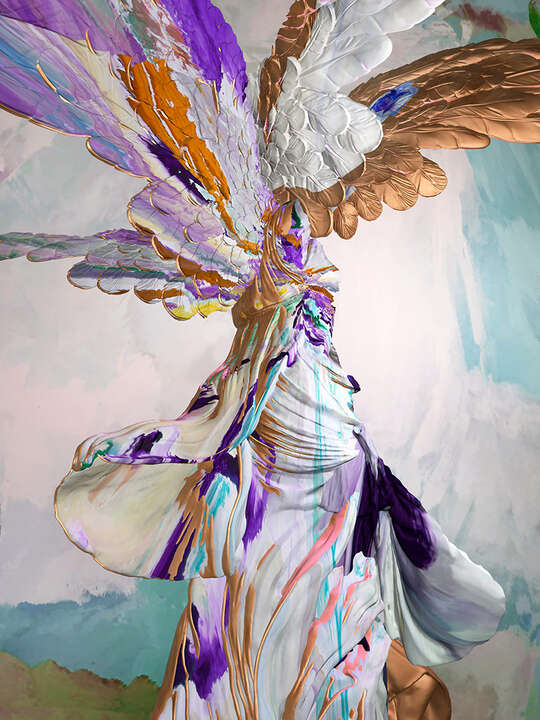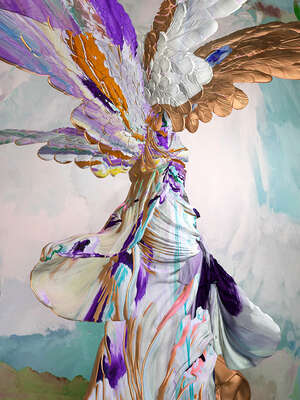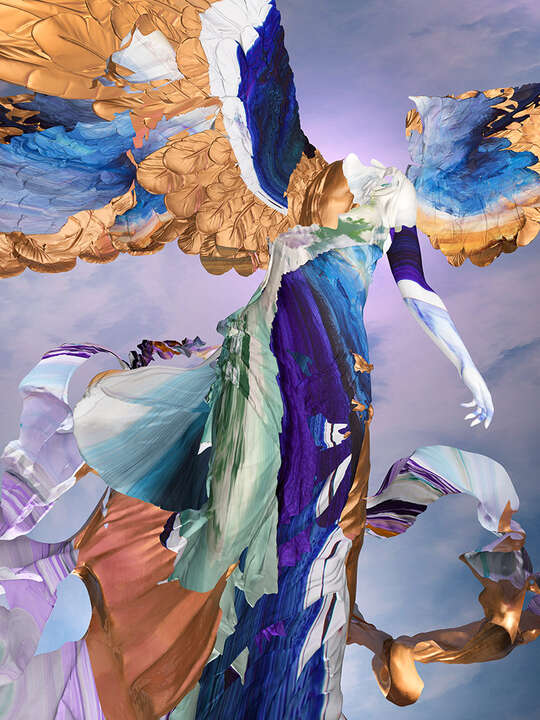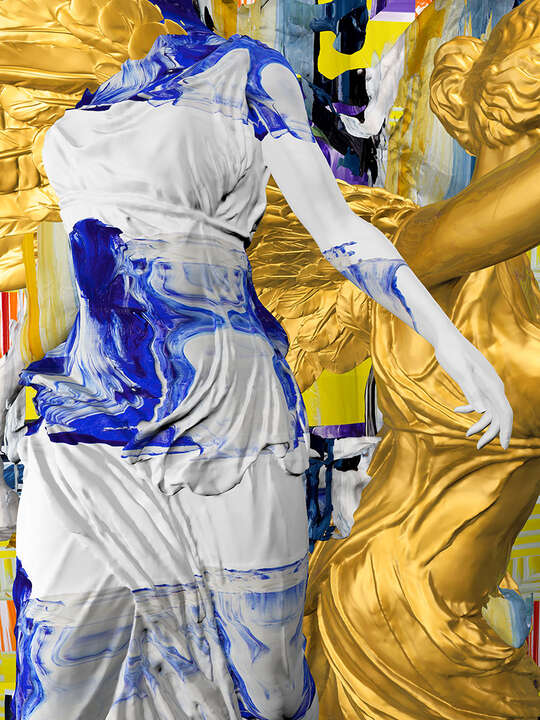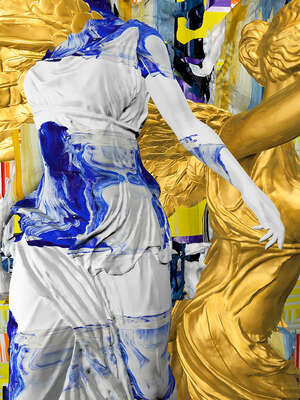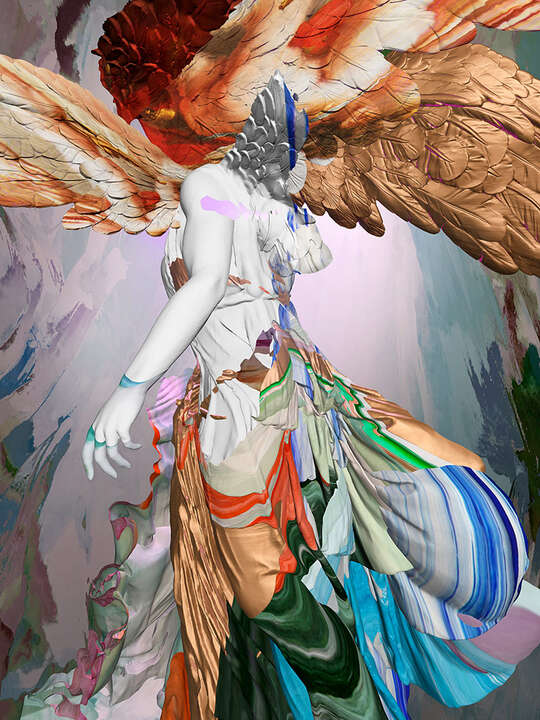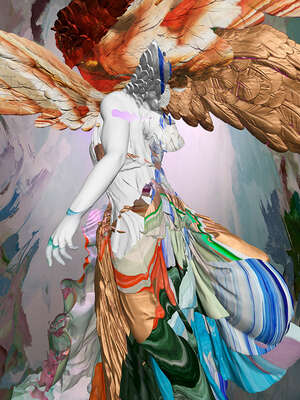Stefan Saalfeld is fascinated by the synthesis of drawing, painting and generative software art. He combines digital techniques with many years of painting experience to produce a vibrant stream of images. Using the computer, he generates compositions of dense colour lines that overlap, or run alongside one another. Refined breaks in the horizontal lines appear like digital sound waves with stop and search systems. Some works comprise up to forty individual layers. Mythical creatures and figures jump between these layers like chimeras between pop art and post modernism that might have just come out of from a time machine.
As a clever final touch, Saalfeld adds something otherwise lacking in digital images: a patina, grunge, the wear and tear of life. The otherwise sterile and blemish-free works are given a vintage look, lending them romance and honesty. The artist achieves this authenticity by overlaying different elements, texts and patterns, in multiple levels. What emerges is a digital painting that far exceeds the boundaries of analogue imagery and amazes us with its remarkable detail. It is this combination of technological elements and organic shapes that makes Saalfeld’s images such exciting discoveries.
Christina Wendenburg
1996 Galerie Waskowiak, Berlin
2006 Galerie art-ig, Munich
2011 Stefan Saalfeld Showroom, Munich
2012 84 GHz, Munich
2013 The Wand, Berlin: „Laughing in the Mechanism
BIG DATA ART, Munich
2014 UP&COMING, London, inaugural group show by Kids of Dada, March 2014
LUMAS, Frankfurt/M, „JUMP“
2016 UNPAINTED, Munich
2020 HIDE:SEEK; bei Kroher/Strobel, Munich (MCBW)
2021 SUB TAI Galerie, Berlin „48 h Neukölln“
2022 Haus der Kunst München, „Off shore“, 15 min famous
Tell us a little about yourself and your journey to LUMAS. How did you get into digital art?What's interesting about digital art is this specific aesthetic that is almost too perfect and too smooth. This is where you can start to break it down and infuse it with painterly techniques. This approach runs through all my series of images.
My friends Gerhard Mantz and Holger Lippmann were my connection to LUMAS back in 2013.
Your new works are created from a mix of colors, layers, and textures, but you also engage with a Greek legend and statue. How did you develop this series and its visual language? Why did you choose Nike?
The Nike Remix series is the preliminary culmination of my exploration of the painterly treatment of 3D sculptures. This brings together sculpture and painting. Moreover, the ancient sculpture of Nike of Samothrace, with its brokenness and already modern-expressive posture, offers a multifaceted canvas for projection. Through different textures and perspectives, Nike can appear in various roles and identities, which are also reflected in the titles of the images: for example, Nike Celebration, Nike Sky, Nike Gold.
Regarding the Nike Remix series, how did you make this transition from your earlier work, which already seems quite different?
In the works first shown at LUMAS in 2013, patterns and textures as landscapes were the main theme. At some point, the desire arose to break open this rather flat setting, to enter the images as if they were theater backdrops, and to use different perspectives and lighting moods.
Using digital software, the possibilities are almost endless. How do you set your boundaries and maintain control while working? How do you avoid visual overload?
Each motif has its own development dynamics and needs to reach the point where something new flashes up. At the beginning of the process, there can be a lack of orientation, but curiosity and intuition guide you through the jungle of images. The speed of digital work is ambivalent; even with seven-league-boots, you can get lost—or be the first to arrive.
What does your creative process look like, and how long do you typically work on a piece? What training, formal or informal, did you need to develop your methods?
The process is different for each work, as is the technique. You must work your way into it, know your tools, experiment, and bring things together, staging figures and painting. A new image takes about a month to complete.
Is there anything else you’d like to share about your work or yourself?
... it‘s always exciting!
